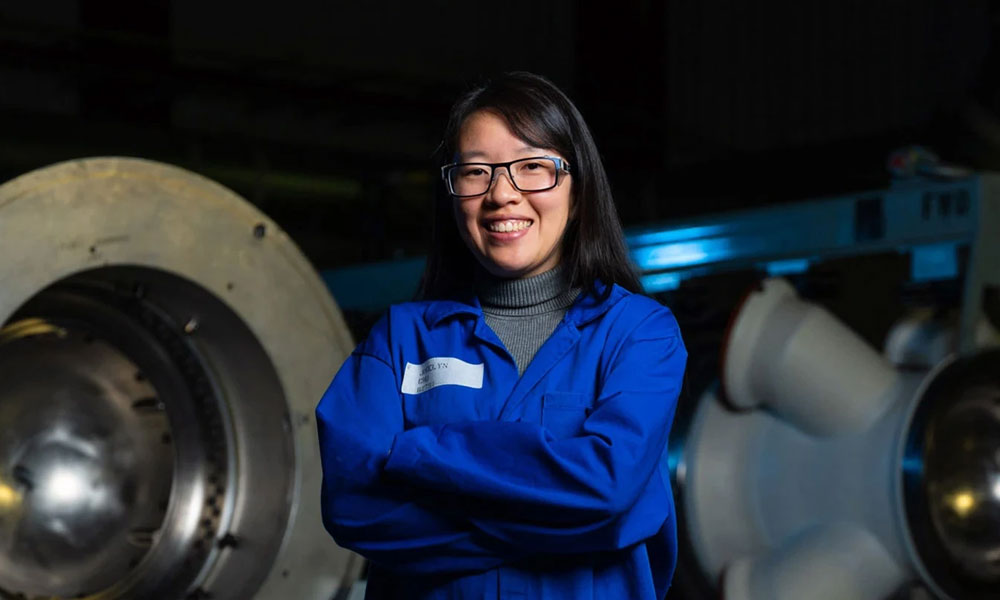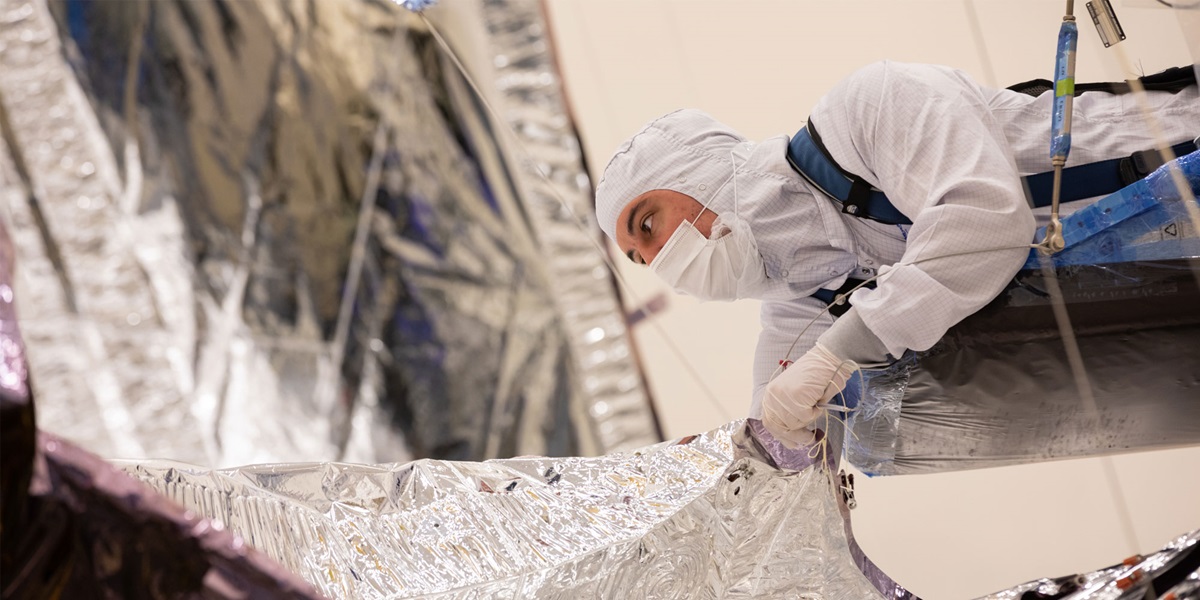Couple Celebrates Their Projects Colliding as Northrop Grumman Helps NASA Retrieve Spacecraft After Splashdown
By Michelle A. Monroe
Two aerospace engineers fall in love, get married and spend years in each other’s professional orbits before they finally collide.
It’s a story practically written in the stars.
Debra and Joe, who work for Northrop Grumman and NASA, respectively, got the rare opportunity to tell their friends and family about how their projects came together for the spacecraft splashdown in December.
Passion Projects
Debra and Joe grew up in a similar area of Wisconsin but didn’t meet until their last year attending the University of Minnesota where, as aerospace engineering majors, they were assigned to the same design project. They hit it off, said Joe, and later married; they now live in California.
Debra, now a Northrop Grumman program manager of another high-energy laser program, worked on a 150-kilowatt class laser that was installed on the U.S. Navy’s USS Portland. Now a chief engineer, Joe worked as a manager on NASA’s Orion spacecraft for the Artemis I mission, the first in a series of missions focused on deep space exploration and establishing a sustainable human presence on and around the moon. Crews aboard the USS Portland recovered and transported the Orion capsule back to land following its splashdown.
“It’s really cool how our two programs came together. It was a great feeling to coincide with something my husband worked on for so many years.”
— Debra, Program Manager
While Northrop Grumman and NASA often collaborate, this December was the first time the couple had their projects intersect.
“When I realized the ship with my team’s laser was going to go get that capsule, I was pretty excited,” said Debra, who broke the news to her husband.
They have supported each other in their careers over the years, with Debra attending launches in Florida, and Joe watching the laser roll down the streets of Redondo Beach, California, on a custom semi-trailer that had to avoid hitting traffic signals with the immensely tall mirror turret on its way to the USS Portland.
“I didn’t know about our projects intersecting until just a few days prior to the landing,” Joe said. “It’s one of those wild coincidences.”
Splashdown Success
Powered by NASA’s Space Launch System, which includes Northrop Grumman-manufactured solid rocket boosters, Orion blasted off on Nov. 16, 2022. At its most distant point from Earth, the spacecraft traveled about 268,000 miles — thousands of miles beyond the moon — going farther than any human-rated spacecraft has ever flown. The laser tracked Orion’s splashdown journey and generated estimated location coordinates of the capsule’s location after splashdown.
On Dec. 11, 2022, the Orion capsule splashed down in the Pacific Ocean off the coast of Baja California and the USS Portland retrieved it.
Joe and Debra were both at home as the splashdown aired live on TV.
“I was very emotional watching it splash down because I had been on the project all those years and I thought of all the hard work that everybody put into it,” Joe said. “It was very rewarding, and it was a great sense of accomplishment and relief for everything to go perfectly.”
When asked if they had words of wisdom to share with others who want to be great teammates with their partner, Joe shared that his advice would be to support one other and be kind. Debra shared a similar perspective.
“It’s really cool how our two programs came together,” Debra said. “It was a great feeling to coincide with something my husband worked on for so many years.”

Life at Northrop Grumman: Recent Stories
Shape your career journey with diverse roles and experiences that expand your expertise, feed your curiosity, and fuel your passion.

Life at Northrop Grumman: Archived Stories
It takes every one of us to make the impossible a reality. See what life is like at Northrop Grumman.